179 Interesting Facts Will Blow Your Mind Part 2
 |
| Facts. Photo: ichemeblog.org |
91. Ancient Egyptians used dead mice to ease toothaches
In Ancient Egypt, people put a dead mouse in their mouth if they had a toothache, according to Nathan Belofsky’s book Strange Medicine: A Shocking History of Real Medical Practices Through the Age. Mice were also used as a warts remedy during Elizabethan England.
92. Abraham Lincoln's bodyguard left his post at Ford's Theatre to go for a drink
You already know that Abraham Lincoln was shot and killed by John Wilkes Booth while watching a performance at Ford's Theatre in Washington, D.C., on April 14, 1865. But what you might not have been aware of is that the president had a bodyguard named John Frederick Parker with him on that fateful night, according to Smithsonian Magazine.
Unfortunately, Parker was a police officer with a less-than-stellar reputation. After arriving three hours late for his shift, the officer left his post protecting the president to get a drink at the Star Saloon next door to the theatre. It was during this time that Booth entered the box seats where Lincoln was sitting and shot the president.
93. Betty White is older than ballpoint pens, trampolines, and sliced bread
 |
| Photo: nypost.com |
Actress Betty White was born on Jan. 17, 1922. That means the Hollywood icon is older than plenty of things, including ballpoint pens, trampolines, microwaves, electric razors, instant coffee, garages, traffic signals, rubber tires, frozen food, sunglasses, and even sliced bread, reported BestLife.
94. Koalas Have Fingerprints
Chimpanzees and gorillas have human-like fingerprints and so do koalas. In fact, koala prints are so alike as to be indistinguishable from human fingerprints, even to expert crime scene investigators. As of yet, no koalas are known to have framed humans for their crimes, but now we know it’s not impossible…
95. Paint used to be stored in pig bladders
According to Reader's Digest, Pig bladders were used in the 19th century to store an artist’s paint. The bladder would be sealed with a string and then pricked to get the paint out. This option wasn’t the best because it would often break open. American painter John G. Rand was the innovator who made paint tubes from tin and screw cap in the 19th century.
96. The first time a toilet appeared on TV was in 1957
 |
| Photo: wickes.co.uk |
In the early days of television, there were much stricter rules about what you could and couldn't show onscreen. That's why Leave It to Beaver ran into a problem in 1957 when one script included the show's main characters keeping their pet alligator in a toilet tank. The issue was that they weren't allowed to show a toilet on TV, according to the Standards and Practices department. Ultimately, they reached a compromise: The show could feature the toilet tank as long as the bowl remained out of the shot.
97. Children's medicine once contained morphine
If you were a baby in the middle of the 1800s and you cried while teething, your parents might have given you Mrs. Winslow's Soothing Syrup. This "medicine" claimed that "it soothes the child, it softens the gums, [and] allays all pain." It may have done plenty of soothing, but it was also extremely dangerous—this concoction, like many patent medicines of the time, contained morphine.
98. Water Makes Different Pouring Sounds Depending on its Temperature
 |
| Photo: dailymail.co.uk |
If you listen very closely, hot water and cold water sound slightly different when being poured. The heat changes the thickness, or viscosity, of the water, which changes the pitch of the sound it makes when it’s poured. What we feel as the heat comes from the molecules of the water moving faster. Coldwater is thicker and therefore makes a slightly higher-pitched sound.
99. Plastic Easter eggs and plastic Easter grass were invented by a man who holds more patents than Thomas Edison
If you've ever enjoyed an Easter basket with plastic eggs and grass, then you can thank Donald Weder, the man who invented both. Weder not only holds the patents on these holiday staples, but he also holds a total of 1,413 U.S. patents—including ones for water-based inks, flower-pot covers, and decorative wrappers. That's compared to Thomas Edison, who held just 1,093 U.S. patents.
100. Dinosaurs Lived on Every Continent
According to Lifestyle, back in their day, dinosaurs lived on every continent on earth, including Antarctica. The reason we only find their bones in certain places, though, is that weather and soil conditions in those places were just right for the bones to be fossilized. Scientists also speculate that there may be many smaller-sized dinosaurs that we know nothing about because their bones were too small to fossilize well.
101. Humans are just one of the estimated 8.7 million species on Earth
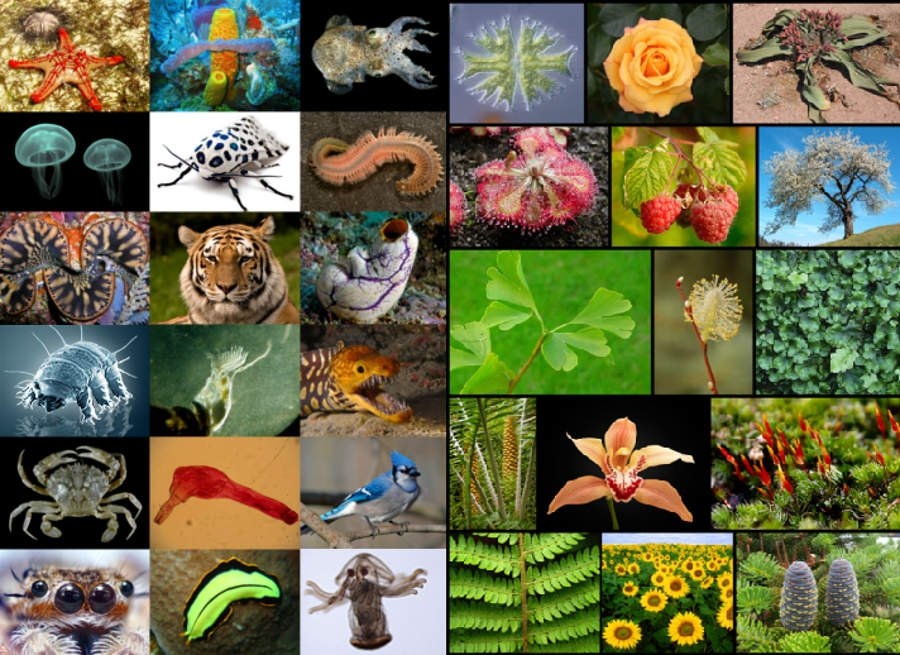 |
| Photo: wordlesstech.com |
Humans share the planet with as many as 8.7 million different forms of life, according to what is being billed as the most accurate estimate yet of life on Earth, wrote theguardian.
Researchers who have analyzed the hierarchical categorization of life on Earth to estimate how many undiscovered species exist say the diversity of life is not equally divided between land and ocean. Three-quarters of the 8.7m species – the majority of which are insects – are on land; only one-quarter, 2.2m, are in the deep, even though 70% of the Earth's surface is water.
102. Many Languages Have the Same Roots
English, Portuguese, Latvian, Pashto, and Greek all sound very different today, but these languages all have a common ancestor called Proto-Indo-European. Though we don’t have any written examples of it, linguists have worked backward from a variety of modern languages to try to reconstruct it. Using their reconstruction, the sentence “The king wanted a son” would be written as “H3rḗḱs súhxnum u̯l̥nh1to.”
103. Bee hummingbirds are so small they get mistaken for insects
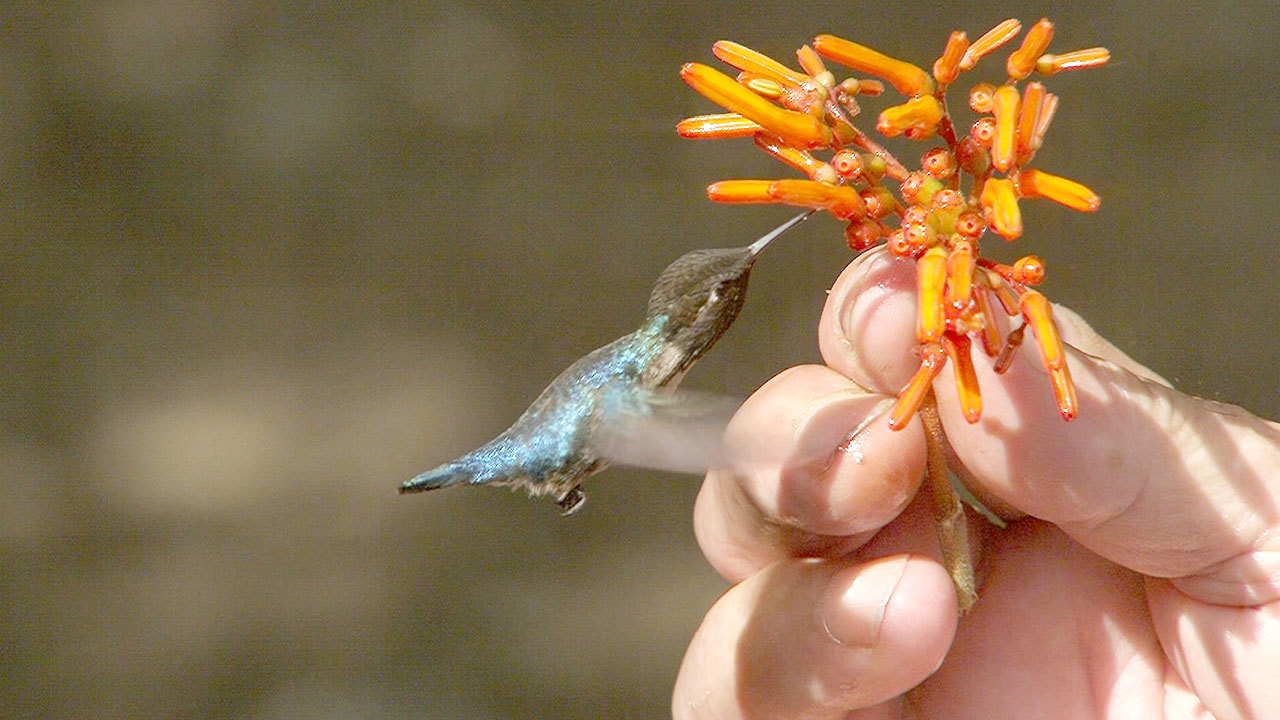 |
| Photo: nhk.or.jp |
Superteacherworksheets showed that most hummingbirds are about three to five inches long. But the bee hummingbird is only five centimeters, or approximately two inches, making it the smallest species of bird alive today. Really it isn’t bigger than a large insect. But don’t let its tiny body fool you. This bird is a fierce flier. It can beat its wings up to 80 times per second. If you ever see one in flight, you’ll notice its wings are just a blur to the human eye. Hummingbirds are also the only vertebrates that can hover in one place. Add to that being able to fly backward and upside down, and these creatures are amazing flying machines.
104. Sea lions can dance to a beat
There are only two mammals on Earth with the proven ability to move their bodies in time with an external beat: humans (though not all humans, to be fair) and sea lions. When researchers at the University of Santa Cruz rescued a stranded sea lion in 2013, they found that she was very smart, and she was even able to learn how to dance. Though parrots can also keep a rhythm, it was previously thought that only animals capable of complex vocal learning could do this.
105. A queen termite can live up to 50 years
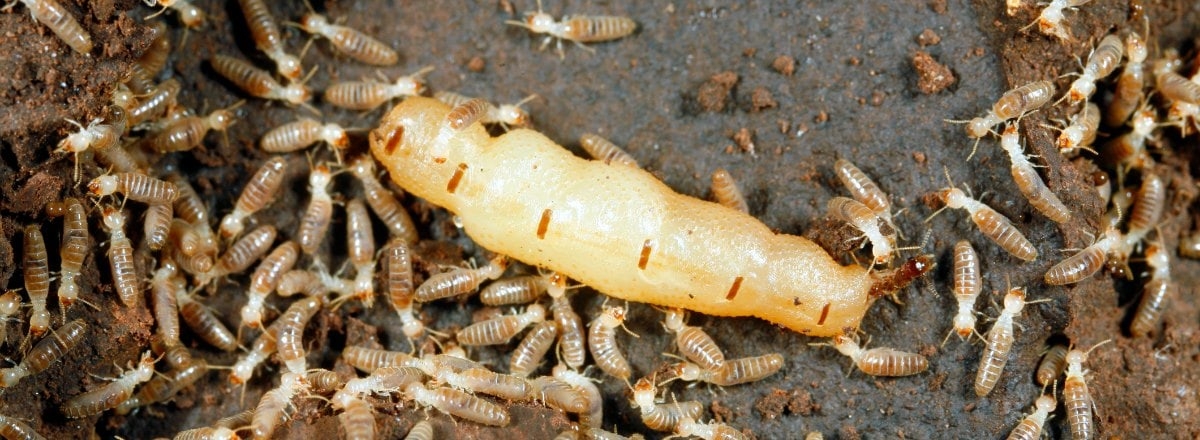 |
| Photo: jcehrlich.com |
Termites are industrious little creatures capable of building massive structures for their expansive colonies. But that's not the only remarkable thing about them. The queen termite can also live up to 50 years, which is the longest lifespan of any known insect, according to Smithsonian. For comparison, worker and soldier termites live just one to two years.
106. Rolls-Royce Makes the Most Expensive (New) Car in the World
Rolls-Royce unveiled a one-off custom build called the Sweptail. At a reported price of nearly $13 million, it is believed to be the most expensive new car ever commissioned. This car is in the Top 10 Most Expensive Cars in the World.
Rolls Royce Sweptail – a bespoke one-off coupe built for one of Rolls Royce’s “most valued customers.” “Sweptail is the automotive equivalent of haute couture,” Giles Taylor, the director of design for Rolls-Royce Motor Cars, said in a statement. “It is a Rolls-Royce designed and hand-tailored to fit a specific customer.” According to Rolls, a customer approached the company in 2013 and asked it to build a one-of-a-kind motor car inspired by the luxury yachts of the 1920s and ’30s. The Sweptail’s signature feature is a single-piece glass roof that tapers into the car’s fastback rear end. It’s a design feature that dominates the car’s silhouette.
107. The legend of the Loch Ness Monster goes back nearly 1,500 years
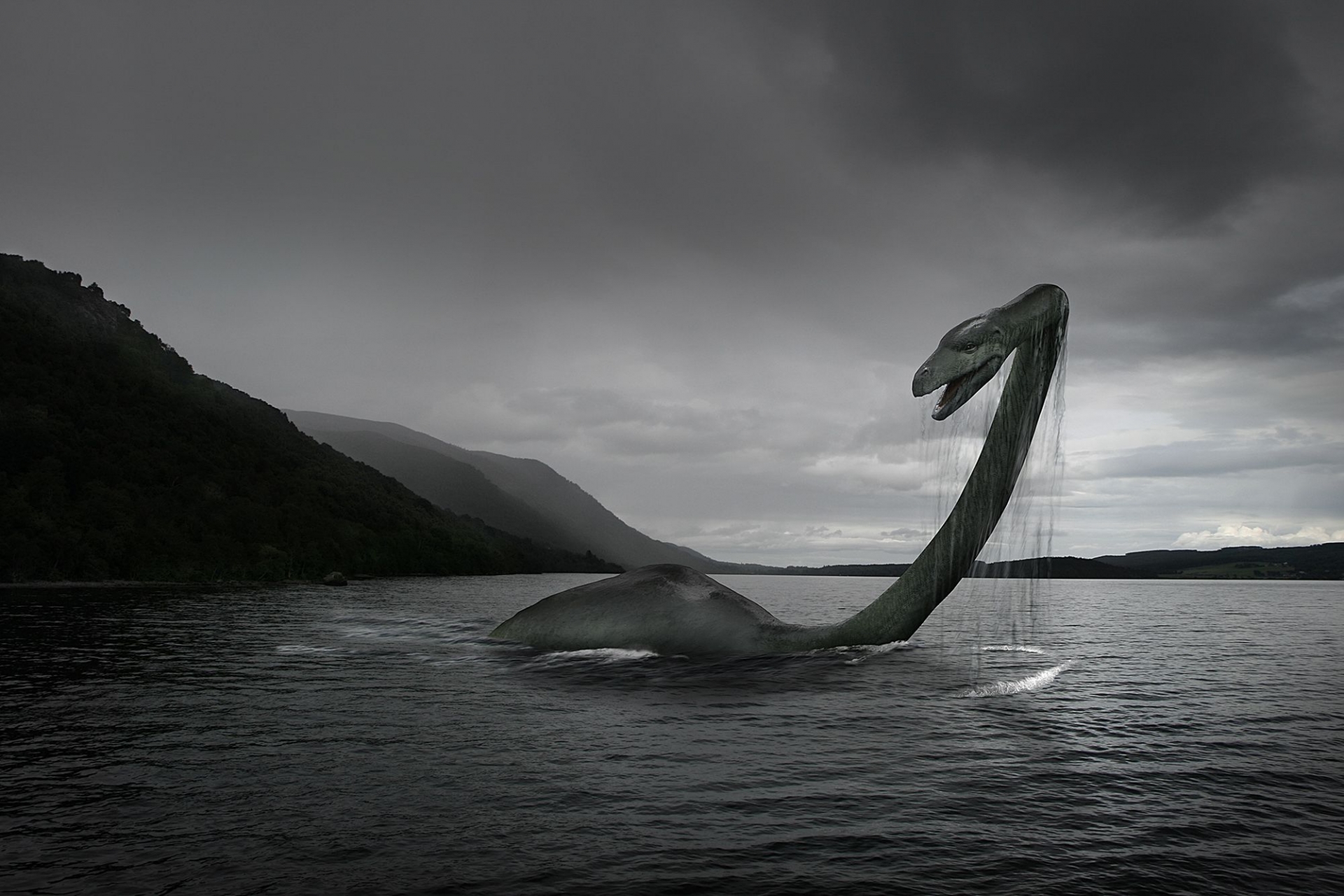 |
| Photo: nypost.com |
The Loch Ness Monster is a mythical animal that allegedly lives in Loch Ness, a large freshwater lake near Inverness, Scotland. Although accounts of an aquatic beast living in the lake date back 1,500 years, all efforts to find any credible evidence of the animal have failed. That hasn’t dampened the public’s enthusiasm, however, for any news about “Nessie.”
Scholars of the Loch Ness Monster find a dozen references to “Nessie” in Scottish history, dating back to around 500 A.D., when local Picts carved a strange aquatic creature into standing stones near Loch Ness, reported history.com.
108. Typhoid Mary Loved to Cook
“Typhoid Mary” was a real historical person: an Irish woman named Mary Mallon who immigrated to the United States in the 1880s. Though she had no symptoms of typhoid fever, she carried the bacteria in her blood and could pass it on to other people. Because no doctor could convince her that this was true and she didn’t feel sick, she insisted on working as a cook. During her career, she infected at least 51 people, three of whom died, before she was isolated in enforced quarantine for the last decades of her life.
109. Nutmeg Can Be Poisonous
 |
| Photo: skywoodrecovery.com |
According to thespruceeats, Nutmeg contains a substance called myristicin, a narcotic with very unpleasant toxic side effects if taken in large quantities. Myristicin can be found in a number of other spices and plants but is present in higher amounts in nutmeg. Ingestion of small amounts of nutmeg is harmless to the body, including the amounts called for in all standard recipes. However, the consumption of more than 1 teaspoon of ground nutmeg at once can cause side effects like wild hallucinations, nausea, vomiting, dizziness, and irregular heartbeat within one to six hours after ingestion. Effects can last for several hours, and, when a large amount is used, can lead to organ failure.
110. Chinese Police Use Geese Squads
You’ve heard of police dogs, but police geese? As of 2013, twelve police stations in a rural area of China have begun to use geese as sentries. They are alert animals and, as you probably know, can create a lot of noise and commotion, and creative Chinese law enforcement officers are taking advantage of that fact. While this trend has yet to spread throughout China, Dongwan police claim that the geese have already stopped at least one theft.
111. There’s a Country Where Twins Are Most Likely to be Born
The central African country of Benin has the highest national average of twinning, with a whopping 27.9 twins per 1,000 births, the researchers said.
The findings may help answer questions about the causes of twinning, which may range from a mother's age, height and diet to genetic factors that are passed down through the maternal line, as well as mortality differences between boys and girls in certain regions.
112. Horses cannot physically vomit
 |
| Photo: horseracingsense.com |
Horses have a band of muscle around the esophagus as it enters the stomach. This band operates in horses much as in humans: as a one-way valve. Food freely passes down the esophagus into the stomach as the valve relaxes but the valve squeezes down the opening and cuts off the passage for food going back up.
Horses, however, differ from us because their valve really works. Humans can vomit. Horses almost physically can’t because of the power of the cut-off valve muscle.
Normally, USA Today concludes, if a horse does vomit, it is because its stomach has completely ruptured, which in turn means that the poor horse will soon be dead.
113. The Man Who Wrote Dracula Never Visited Transylvania
Bram Stoker was an Irish author who is now best remembered for his gothic horror novel Dracula. Partially set in Transylvania, a mountainous region in central Romania, the story cemented the legend of the vampire in mainstream European and American culture. Since Stoker was a notoriously private man, many people over the years have speculated as to his various inspirations for the novel, from Vlad Dracul of Wallachia to the English seaside town of Whitby to a particularly vivid nightmare. One thing is certain – despite Stoker’s many world travels, he never visited Eastern Europe—and, by virtue, Transylvania—at all.
114. For 100 years, maps have shown an island that doesn't exist
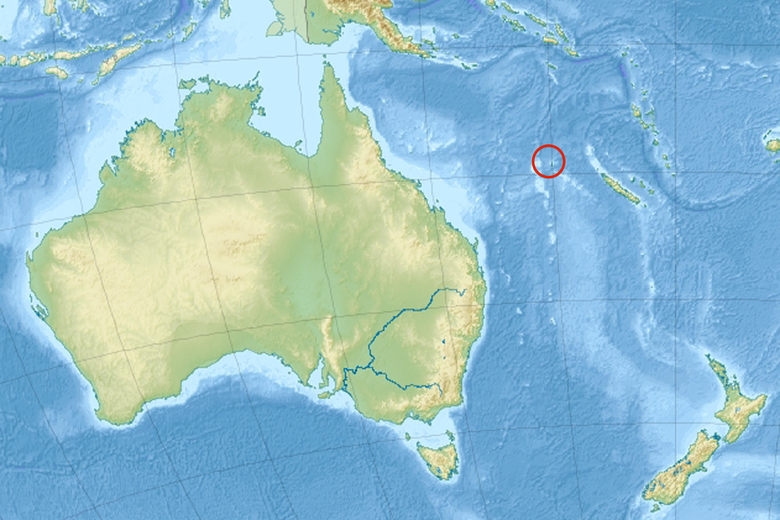 |
| Photo: atlasobscura.com |
According to USAToday, a sizable, uninhabited island shown in the South Pacific on Google Maps and other charts do not exist, according to Australian scientists. Scientists noticed an isle called Sandy Island by Google and Sable Island by others, but it didn't appear on the navigational map aboard their ship. So they decided to steer towards it. Even though it occupied about 60 square miles on maps, the team from the University of Sydney found only the deep blue of the Coral Sea when they arrived at the coordinates of the phantom island this month. Sandy Island was supposed to be halfway between Australia and New Caledonia. The ship's captain approached it nervously, worrying that they'd run aground.
115. 1816 was known as "the year without a summer."
In April 1815, Mount Tambora in Indonesia experienced the biggest volcanic eruption in human history. The event, which lasted an unimaginable two weeks, blew countless tons of dust, ash, and sulfur dioxide into the Earth's atmosphere. That blanket of ash shielded the planet from the sun, which led to "the year without a summer." According to USA Today, parts of New England saw heavy snow falling in June, and a deadly frost set in during July and August.
116. The Australian Government Banned the Word “Mate” for a Day
In 24 hours the word "mate" has stirred passions in Australians from all walks of life and from both sides of the political fence.
And, as Paula Kruger reports, all this public outcry has been set off by a simple memo sent to security staff at Parliament House in Canberra.
Prime Minister John Howard and the Labor leader Kim Beazley objected to the order, saying the expression, "mate", was a part of Australian culture.
The ban was withdrawn within 24 hours.
117. Human teeth are just as strong as shark teeth
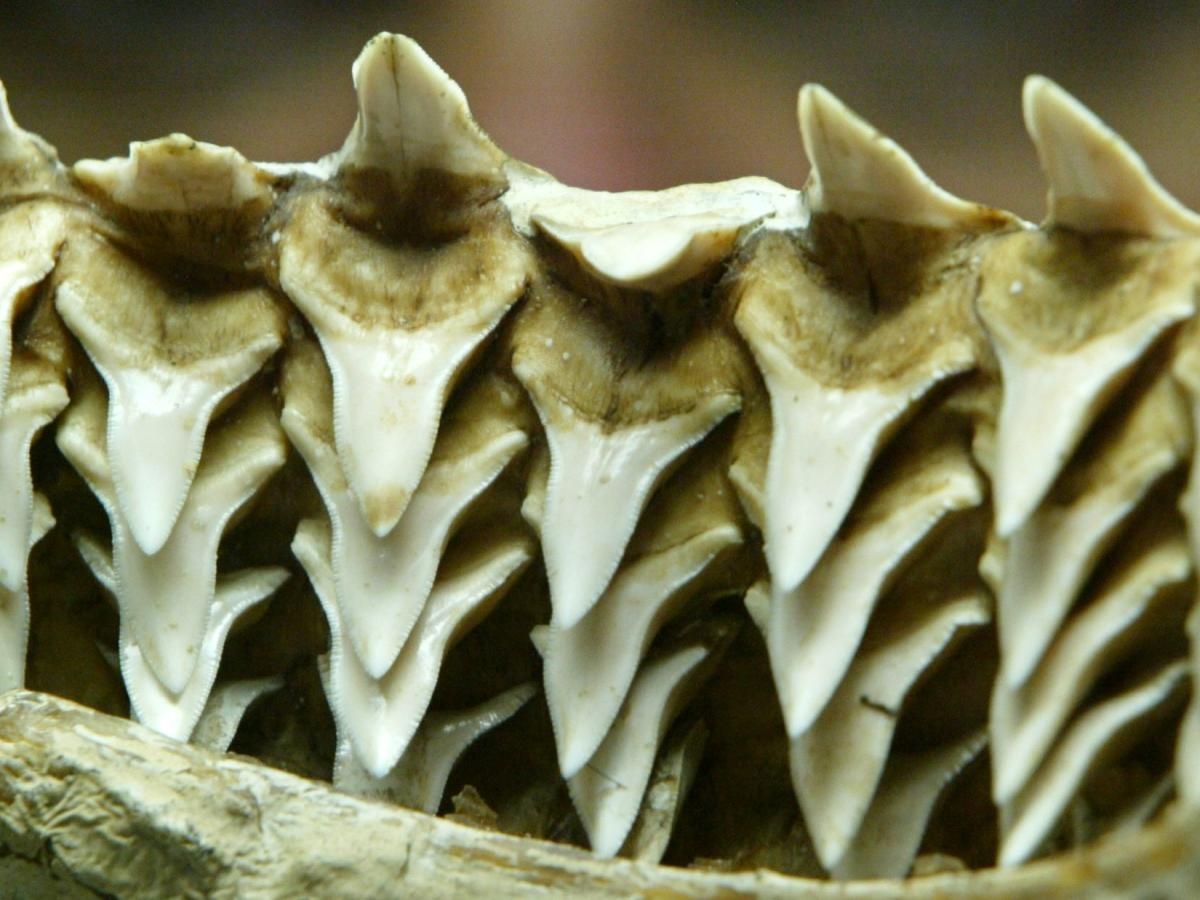 |
| Photo: qz.com |
A shark's teeth might be more feared, but human teeth are just as strong. According to a 2012 study in the Journal of Structural Biology, the enamel on a human wisdom tooth is just as hard as the enamel coating on shark teeth. Both are made of mineral crystals bound together with proteins, which prevent teeth—shark and human alike—from shattering under a sudden impact.
118. Harriet Tubman Was Basically an Action Hero
Unless and until Harriet Tubman assumes her place on the $20 bill, writer-director Kasi Lemmons' Harriet will have to serve as the anti-slavery heroine's national monument. In addition to smuggling escaped slaves through the Underground Railroad, during the Civil War she was the first woman to lead an armed assault. She planned and executed a number of raids and was known to carry a revolver for personal protection.
119. A tick bite can make you allergic to red meat
 |
| Photo: healthline.com |
Rare cases of recurrent life-threatening allergic reactions to red meat have been linked to tick bites, according to researchers from the National Institute of Allergy and Infectious Diseases (NIAID).
Lone Star ticks range from the Southeast through the Eastern United States and bites from the arachnids are known to cause a rare allergy to galactose-α-1,3-galactose (α-gal), a type of sugar found in beef, pork, lamb, and other red meats. Now, researchers from NIAID have found antibodies to α-gal in the blood of 6 of 70 individuals treated for recurrent, unexplained anaphylaxis. All 6 individuals had a history of tick bites and lived in states where Lone Star ticks are common. Adopting red meat-free diets allowed them to avoid further anaphylaxis for the duration of follow-up, which ranged from 18 months to 3 years.
120. Cleopatra lived closer in time to the moon landing than to the construction of the Great Pyramid of Giza
Cleopatra is easily one of the most famous rulers of Egypt, but she actually lived closer to the moon landing than to the construction of the Great Pyramid of Giza. The queen died in 30 B.C., while the great pyramid of Giza was built around 2560 B.C. That means that the pyramid was completed more than 2,500 years before Cleopatra's time, reported jamanetwork.
121. Tornadoes Can Cause “Fish Rain”
 |
| Photo: skymetweather.com |
Tornadoes can develop over water just as well as they can over land. When they do, they’re called waterspouts, and they suck up large amounts of the lake or seawater—as well as whatever’s swimming in that water. If the waterspout travels on to the land and the winds decrease, there’s nowhere for those fish to go but down. As far as we know, there’s no tornado powerful enough to pick up sharks, but a fish-nado is entirely possible.
122. The human nose can detect more than 1 trillion smells
In the past, scientists believed that humans could only smell around 10,000 different scents. However, according to a 2014 study published in Science, we may actually be able to detect around 1 trillion smells. "People have been talked into this idea that humans are bad at detecting smells," said Rockefeller University neurobiologist Leslie Vosshall, who led the study. Incredibly, it seems like we're not so bad at it at all!
123. The longest time between two twins being born is 87 days
 |
| Photo: extra.ie |
Twins Katie and Amy Jones-Elliot hold the Guinness World Record for the longest birth interval between two twins, being born 87 days apart. In 2012, their mother, Maria, went into labor four months early and gave birth to Amy, but Katie was able to stay in her womb for three more months. Miraculously, both girls survived and are healthy today.
124. Napoleon Was Once Attacked by Thousands of Rabbits
 |
| Photo: mentalfloss.com |
There are a couple versions of this story. Most agree it happened in July 1807, after Napoleon signed the Treaties of Tilsit (which ended the war between the French Empire and Imperial Russia). Looking to celebrate, the emperor proposed a rabbit hunt, asking Chief of Staff Alexandre Berthier to make it happen.
Berthier arranged an outdoor luncheon, invited some of the military’s biggest brass, and collected a colony of rabbits. Some say Berthier took in hundreds of bunnies, while others claim he collected as many as 3000. When Napoleon started to prowl—accompanied by beaters and gun-bearers—the rabbits were released from their cages. The hunt was on.
But something strange happened. The rabbits didn’t scurry in fright. Instead, they bounded toward Napoleon and his men. Hundreds of fuzzy bunnies gunned it for the world’s most powerful man.
125. "Kummerspeck" is the German word for the weight you put on from emotional eating
At times, when you're sad or stressed, picking up your favorite takeout or indulging in a delicious dessert can be a simple way to make yourself feel a little better. But if you overindulge in too many treats, then you might notice a little "kummerspeck," which is what Germans call the weight you put on due to emotional eating. Hilariously, it literally translates to "grief bacon."
126. Pigs Are Constitutionally Protected in Florida
 |
| Photo: Pinterest |
First written in 1838, the Constitution of the state of Florida guarantees the right to privacy, the freedom of speech, and the right of pregnant pigs to be free from cages. Unlike many crazy or outdated laws, this amendment is recent (passed in 2002) and comes from a well-meaning place: the prevention of cruelty to animals. During pregnancy, a pig must not be caged or even tethered such that it can’t turn around freely.
127. Your mouth produces about one liter of saliva a day
In general, acinar (secretory) cells are responsible for the production of the primary saliva. The ductal cells are responsible for further modifications of saliva until it is secreted in the mouth. Saliva is 99% water and 1% protein and salts.
You may find that your mouth gets a little dry when you're nervous. But on most days, you produce about one liter of saliva.
128. Sweat doesn't actually stink
 |
| Photo: hips.hearstapps.com |
According to verywellhealth, Sweat itself doesn't have a smell. Body odor is actually the fault of the bacteria that live in sweaty areas of your body. Bacteria aren't the only odoriferous offenders though. It also depends on which sweat glands are doing the sweating. You have different types of sweat glands in your skin—eccrine glands and apocrine glands.
129. Some planets produce diamond rain
Deep within Neptune and Uranus, it rains diamonds—or so astronomers and physicists have suspected for nearly 40 years.
Diamond is denser than the methane, ammonia, and water left in the ice layer, so the carbon crystal would start to sink toward the planet’s core. It would accumulate new layers as it falls when it touches other isolated carbon atoms or diamonds, allowing individual diamond blocks to reach a size meters in diameter. Americanscientist thinks that, as a result, a thick layer of carbon surrounds the rocky cores of Uranus and Neptune. This carbon layer may consist of blocks of solid diamond—or, if the temperature is extremely high (as some planet models suggest), it might transform into liquid carbon or a mix of solid carbon and liquid carbon.
130. Human bodies give off a tiny amount of light that glows
Being a human that glows sounds like something out of a superhero movie. But it turns out that all bodies emit a tiny amount of light. "The human body literally glimmers," wrote researchers in a 2009 study published in PLoS One.
According to The Guardian, this glow is "the result of highly reactive free radicals produced through cell respiration interacting with free-floating lipids and proteins. The 'excited' molecules that result can react with chemicals called fluorophores to emit photons."
131. Greenland Sharks can live for five centuries
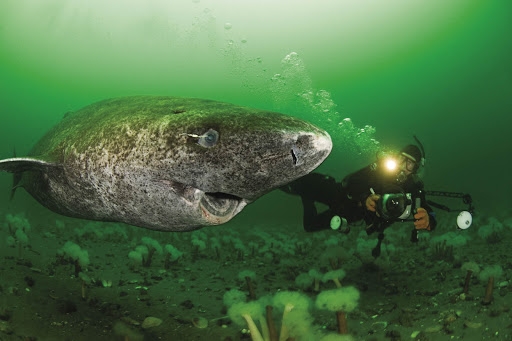 |
| Photo: divemagazine.co.uk |
Greenland sharks (Somniosus microcephalus) had been rumored to be long-lived. In the 1930s, a fisheries biologist in Greenland tagged more than 400, only to discover that the sharks grow only about 1 centimeter a year—a sure sign that they’re in it for the long haul given how large they get.
Such is the life of the Greenland shark—a 5-meter-long predator that may live more than 400 years, according to a new study, making it the longest lived vertebrate by at least a century. So it should come as no surprise that the females are not ready to reproduce until after they hit their 156th birthday.
132. Canada Once Heavily Targeted LGBTQ Individuals
Looking very much like a radio, Canada spent thousands on its historic “Fruit Machine” during the Cold War era. This device was supposedly able to identify gay men and lesbian women by monitoring vitals as subjects were shown pornographic images with homosexual content.
This unfortunately led to the wrongful persecution of many of Canada’s fine citizens. Prime Minister Justin Trudeau recently apologized on behalf of the country’s dark past for the mistreatment of these men and women.
133. The largest turtle ever recorded weighed more than a ton
 |
| Photo: happymag.tv |
The largest and heaviest turtle ever recorded was a leatherback that washed ashore in the United Kingdom in Sept. 1988 after it had drowned when it was trapped in a fishing line. Around 100 years old at the time of its death, the turtle was almost 9 feet long and weighed 2,016 pounds.
134. You can sneeze faster than a cheetah can run
According to Beyond Walls of ignorance, the speed of a sneeze is around 100 mph which is faster than cheetahs run, the fastest animal alive. This is four-and-a-half times faster than Usain Bolt's record, and 20 times faster than Michael Phelps. (Unfortunately, we also expel about 100,000 germs when we sneeze.) Water makes different pouring sounds depending on its temperature.
135. A million seconds is about 12 days while a billion seconds is about 32 years
A million dollars may sound almost as good as a billion, but that's only because the average person has no concept of the staggeringly vast difference between the two amounts. However, The New York Times breaks it down for us by using time as an example. "It would take almost 12 days for a million seconds to elapse and 31.7 years for a billion seconds," according to a 1986 article. Yeah, that's a huge difference. On top of that, "a trillion seconds would amount to no less than 31,709.8 years."
136. Saudi Arabia imports camels from Australia
 |
| Photo: Twitter |
This is because their own camels are bred for domestic purposes and racing, with the camels from Australia being used for the meat, which is considered a delicacy, wrote Commodity.
Australia originally had camels imported to be used for transporting heavy loads or for riding. They were let loose when their work was done, causing an unwanted spike in their population. Australians then sold the camels back to desert-based countries like Saudi Arabia, which use camels at a much higher volume.
137. One Man Survived Two Atomic Bombs
If you feel like you might have the worst luck in the world, consider Tsutomu Yamaguchi. He survived both nuclear attacks to Japan when the U.S. dropped atomic bombs during WWII.
Yamaguchi, sent to Hiroshima on business on August 6th, 1945, saw the U.S. drop the first atomic bomb. Miraculously, he survived with burns across his face and arms, but made it home to Nagasaki, according to MSN.
Three days later, the second atomic bomb hit, throwing Yamaguchi across the office and flattening his home. Because his family was out finding ointments to treat his already existent burns, they were safe in a tunnel and miraculously survived as well.
138. The cast of Friends still earns around $20 million each year
 |
| Photo: vox.com |
When the show came to an end, the cast of the popular TV show Friends negotiated syndication rights for themselves. That means they receive a percentage of the revenue (two percent) from reruns airing across all broadcasting companies. Since the much-loved TV show still pulls in around $1 billion of revenue, Courteney Cox, David Schwimmer, Jennifer Aniston, Lisa Kudrow, Matt LeBlanc, and Matthew Perry all make major dough each year for doing, well, nothing—$20 million is the estimate.
139. Radioactive particles from the Cold War were found in the deepest parts of the ocean
Findings published in 2019 in Geophysical Research Letters revealed that radioactive particles that originated from atomic bomb tests between the 1940s and the 1960s were detected in crustaceans that live in the deepest part of the ocean, the Mariana Trench.
According to Smithsonian, "from 1945 to 1963 the United States and the Soviet Union (with a little help from the United Kingdom and France) detonated nearly 500 nuclear bombs, 379 of which exploded in the atmosphere. These tests dramatically increased the amount of carbon-14 on our planet. The Test Ban Treaty of 1963 put a stop to most atmospheric and underwater tests, and carbon-14 levels in the atmosphere started a slow return to normal—though they are still higher than pre-nuclear levels—as ocean waters and land-based life absorbed carbon from the air."
140. Cows Kill More People Than Sharks
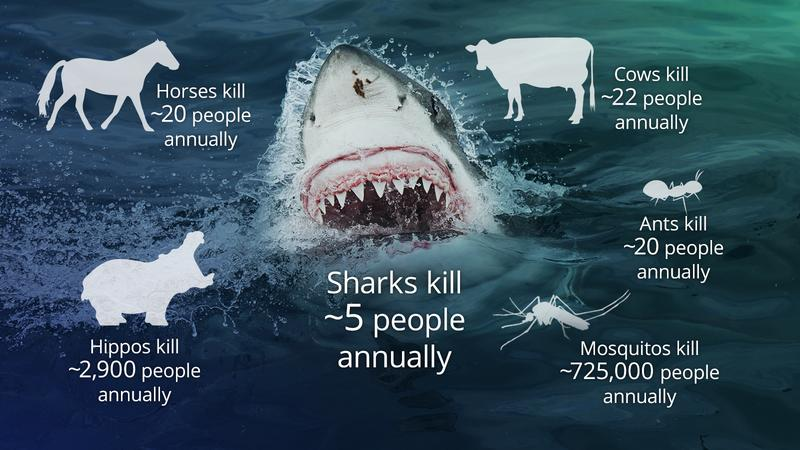 |
| Photo: Pinterest |
You know sharks can be deadly. But in reality, they don't kill very many people each year.
According to Discovery, there are approximately five deaths caused by sharks annually, while horses kill about 20 people a year and cows kill about 22. Crocodiles gobble up 1,000 people a year. By spreading malaria, mosquitos kill hundreds of thousands more people than sharks do every year. Deer also cause hundreds of deaths, mostly by running out in front of cars.
141. Pluto Technically Isn’t Even a Year Old
Pluto was discovered on February 18th, 1930. It is the farthest (dwarf) planet from the Sun, requiring it to go a much farther distance than we are used to on Earth. It takes a whopping 248 Earth-years to complete one rotation of its own around the sun—its own year. This places Pluto’s first birthday since its discovery on Monday, March 23, 2178.
142. Whales swallow half a million calories in a single mouthful
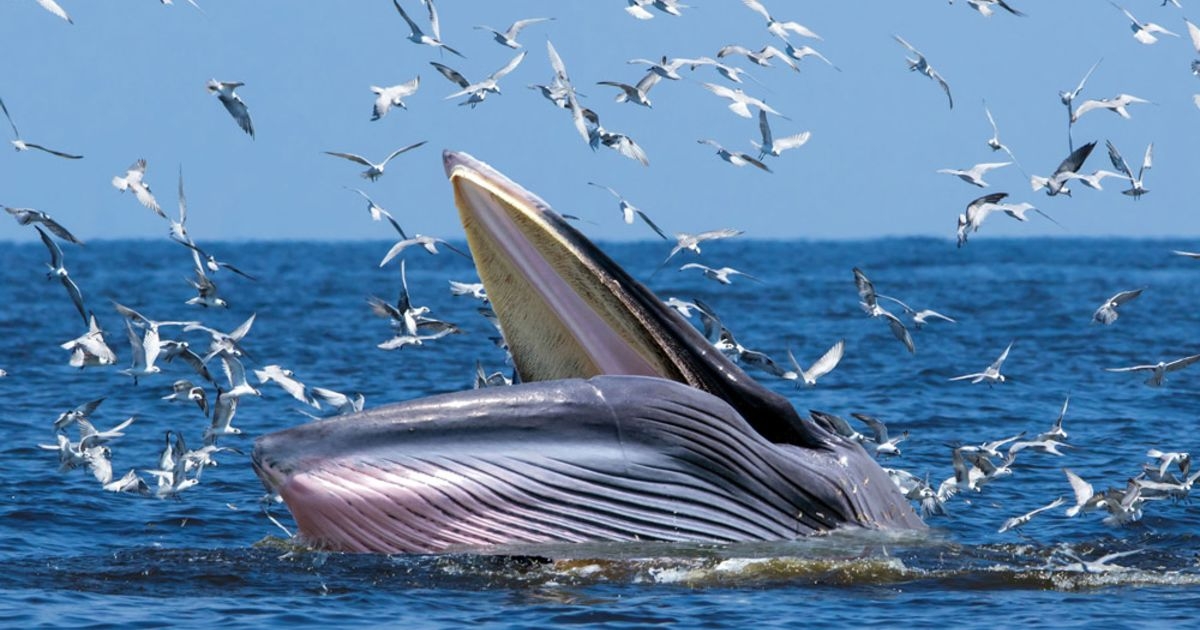 |
| Photo: sportdiver.com |
Or, specifically, around 457,000 calories, according to a 2011 study in the Journal of Experimental Biology. Many whale species take in oversized mouthfuls of ocean water and filter out the krill and other small ocean life for consumption using their baleen plates. They're the Michael Phelps of the ocean world. (The swimmer has been said to eat 12,000 calories a day.)
143. Newborns Don’t Have Kneecaps
Parents, don’t pull out your knee pads yet. This widely known belief is only a half truth, as babies actually technically do have kneecaps when they are born. Lifestyle said that those knees just aren’t hardened yet, and remain soft cartilage throughout their childhood until they eventually turn into bone. So, while it may seem like a risk, your little ball of joy will be absolutely fine as long as they aren’t swinging from trees or anything.
144. There's a year-round ice hotel
 |
| Photo: arcticdirect.co.uk |
Icehotel is a world-famous hotel and art exhibition made of ice and snow. It was founded in 1989, and it's literally rebuilt every year in the Swedish village of Jukkasjärvi. Now, there is also Icehotel 365, a permanent structure that includes 20 luxury suites and a large ice bar that serves champagne. This one can be visited year-round, and is cooled by solar panels during the summer.
145. George Washington never actually lived in Washington, D.C
The first president of the United States never lived in Washington, D.C. He lived in New York, the nation's first capital, and Philadelphia. John Adams was actually the first U.S. president to live in D.C. And as for why Washington never lived in the White House? He died before the establishment was finished.
146. Cheetahs don't roar
 |
| Photo: mymodernmet.com |
Unlike the other big cats it's often associated with—leopards, jaguars, tigers, and lions—cheetahs don't express themselves with fierce roars.
So what do cheetahs sound like? They meow and purr just like a regular housecat. Even though cheetahs, which can weigh up to 159 pounds, are quite large, their anatomy is that of a small cat. Their voice box is fixed, with vocal cords that vibrate as they breathe in and out. This allows them to purr but strips away their ability to roar.
147. Humans aren't the only species to adopt
Scientists agree that both humans and animals have an instinct to care for others. Some examples include a dog that nursed a baby squirrel as part of her own litter, captive apes that treated cats like infant apes, and a dog that watched over a baby owl, according to nationalgeographic.
Naturally, when adopting within the same species, animals help their young survive in order to pass on their DNA. When it comes to adopting animals of another species, it becomes mutually beneficial to have more furry friends in the group that take on other roles in survival—whether that be hunting, gathering, or just simply cute companionship.
148. Blue Ivy Carter Is the Youngest Person Ever to Appear on a Billboard Chart
 |
| Photo: vulture.com |
Jay-Z released his hit “Glory” in January of 2012. A dedication to his first-born child at the time, the rapper decided it would make sense to have her featured on the song, including a clip of her crying before the track ends. Because her dad officially credited her in the song’s title, Blue Ivy Carter became the youngest human on Earth to have a Billboard hit—at a mere two days old. And for more Carter family trivia, don’t miss the 20 Little-Known Facts About Beyoncé That Will Make You Love Her Even More.
149. Giraffe tongues are nearly two feet long
The giraffe’s tongue is typically black, blue or purple and can measure 18–20 inches long.
The tongue is also prehensile, meaning the animal can use its strong, muscular tongue to grasp and manipulate objects. Thus, giraffes can use their tongues to adeptly remove leaves and shoots from even the thorniest of plants.
150. Greeks and Romans used to use crocodile dung as skincare
The ancient Greeks and Romans believed that crocodile feces was beneficial for the skin, and frequently used the substance as an early anti-aging treatment. According to plastic surgeon Terry Dubrow, MD, the substance was frequently combined with mud to create face masks.
151. The first Star Wars was expected to be a flop
 |
| Photo: gamesradar.com |
It may well be one of Hollywood's biggest success stories, but when the original Star Wars film was released in 1977 many people, including creator George Lucas, believed it would be a flop.
Star Wars had a budget of $8 million, which 20th Century Fox was reluctant to give to George Lucas, so he accepted a lower salary in order to keep the budget, but asked for full merchandising rights if the film made sequels.
With help and encouragement from friends like Steven Spielberg, he fixed up the film. It was an instant hit, making $1.5 million in its limited release. It went on to make $775 million around the world, and since Lucas obtained full merchandising rights, he became incredibly rich. More recently, Disney picked up the entire franchise for $4 billion.
152. A 70-Year-Old Woman Completed Seven Marathons in Seven Days, Across all Seven Continents
 |
| Photo: metro.co.uk |
Chau Smith was always an avid runner, and, in 2017, decided that for her 70th birthday, she would complete seven marathons in one week across all of the continents (yes, that includes Antarctica). Traveling made it challenging, as Smith made the race in Egypt just minutes before the start because her plane to Cairo was delayed. Despite the obstacles, she went into full “beast mode” and completed her goal.
153. Several Chinese emperors died from taking an "immortality" elixir
Chinese emperors who wanted to extend their lifespan would take elixirs that were thought to bring on immortality. However, these elixirs actually contained mercury, lead, and arsenic, and resulted in their deaths from poisoning. According to historians, the first emperor to die from elixir poisoning was Qin Shi Huang around 210 B.C., and the last was Yongzheng in 1735 A.D.
154. Most people break up on Mondays
 |
| Photo: edit.sundayriley.com |
According to coffeemeetsbagel, most people feel bad on Mondays because the weekend is over. It is a day that follows two days of fun and freedom. For some, it follows two days of cleaning, shopping, fixing etc. Some people face a lot of pressure on Mondays. Having to get up early, face the day’s schedule at work, deadlines and projects etc. So many things can make Mondays demoralizing when you dwell on negative thoughts. The mind has become used to resting, so it takes ages to get back into the working mode, which makes people feel like they are useless/slow/unproductive. All these feelings combined with a shaky relationship can make break up easy and faster.
155. There May Be 2,000 Active Serial Killers in the U.S. Right Now
Thomas Hargrove has been archiving homicides for years. Through his experience, he came up with an algorithm that found patterns in recent murders. This allowed him to estimate the number of unsolved, repetitive cases, leading him to the estimation that the number of active serial killers in the U.S. is around 2,000.
156. Adolf Hitler plotted to kill Winston Churchill with exploding chocolate
The Nazis might be known for heinous war crimes, but assassination by chocolate is one evil plot that they were able to keep relatively under wraps. In the 1940s, Adolf Hitler's bomb-makers coated explosive devices with a thin layer of dark chocolate, then packaged it in a black and gold paper in order to make it look fancy, according to Smithsonian. German secret agents were to place this "chocolate" in Winston Churchill's War Cabinet dining room where he often ate his meals. However, the plan was foiled by British spies. Death by chocolate averted!
Click here to discover part 1 of 179 Interesting Facts Will Blow Your Mind
157. Beethoven Could Still Hear After Going Deaf
 |
| Photo: vietnamnet.vn |
The one thing everyone knows – or thinks they know – about Ludwig van Beethoven is that he composed some of music’s greatest masterpieces while completely deaf.
Upon going deaf, Beethoven discovered that if he bit onto a metal pole that connected to the piano he was playing, he could hear almost perfectly well. This process is called bone conduction and was even reportedly used in the now-famous raid on Osama Bin Laden.
158. The longest bout of hiccups lasted for 68 years
Iowa farmer Charles Osborne holds the world record for the longest continuous bout of hiccups at 68 years. According to BBC News, Osborne started out hiccuping about 40 times a minute, though eventually, it slowed down to 20 a minute. He died in 1991, after having spent 70 percent of his 97 years hiccuping.
159. Crows holds grudges
 |
| Photo: mentalfloss.com |
Netizens were amazed at the trivia and several users shared instances where crows remembered human faces. The discovery was made when John Marzluff from the University of Washington had led a study in 2012. He found that crows and human beings shared the ability to recognize faces and relate the faces with positive and negative feelings.
160. Black teeth were a sign of wealth in 18th century England
Early Tudor Britain had not yet ‘discovered’ sugar, so people of the Tudors times had relatively pearly white teeth. The Tudors had an ever-increasing appetite for sugar, now imported from territories in the West and East Indies as well as from Morocco and Barbary. Sugar was used for anything from dressing vegetables and preserving fruit to the concoction of medical remedies. But it was still an expensive ingredient, and like spices, it was mainly eaten by the rich. As a result, the wealthier you were, the more rotten your teeth were likely to be. Queen Elizabeth was said to have loved sugar so much that her teeth were black.
Elizabeth’s bad teeth have certainly been exaggerated – since there’s only one record case of her having to have a rotten tooth extracted. foreign ambassadors found her speech difficult to understand. The cause was in part her love of sweets. Poor Elizabeth was so frightened of seeing a dentist that a bishop had one of his own teeth pulled to prove that the pain was bearable – poor chap.
161. Almonds are part of the peach family
 |
| Photo: npr.org |
Almonds are actually the hard-shelled fruit of the almond tree. This type of stone fruit is a member of the same family as peaches, apricots, and plums. And if you think about it, the pit of a peach does indeed resemble a large nut.
162. The Bermuda Triangle Isn’t So Bad After All
This area in the North Atlantic Sea, is also called “The Devil’s Triangle” because it is an area of the ocean that stretches between the tip of Florida, Bermuda, and Puerto Rico. It has been thought to seemingly swallow up ships and aircraft, never to be seen again, and explorers as far back as Columbus have reported odd occurrences, like fireballs in the sky (that turned out to be a meteor crashing).
Don’t put away your sailboats yet, though; historians, scientists, and the U.S. Coast Guard have proven that vessels are no more likely to disappear in the Bermuda Triangle than they are anywhere else in the ocean. Many prior disappearances have been demystified as remains of numerous wrecks were discovered or explained by weather patterns in the area at that time.
163. Apple Pie isn't actually American
 |
| Photo: loveandoliveoil.com |
Apples originally come from Asia. The first pies were baked in Medieval Europe. Even the concept of putting apples in pie traces back to a recipe from England in 1381. Nevertheless, the phrase "as American as apple pie" turned up by 1924 and became a common saying during the years of the Second World War.
164. Bill Gates has Donated Nearly Half His Fortune
Bill Gates is well-known for his success with Microsoft. He isn’t as well known for his major contributions to philanthropic causes, with his wife Melinda alongside him. He encourages the Giving Pledge, a notion that, if you are fortunate enough, you should be giving 50 percent of your wealth to those that need it most. By following his own footsteps, he has donated $28 billion and has saved around 6 million lives by bringing vaccines and better healthcare to people worldwide. Other notable philanthropists have been Andrew Carnegie, Warren Buffett, and John D. Rockefeller.
165. You can always "see" your nose
Your nose is in your field of vision, so you are always looking at your nose. Luckily, our brains filter out sensory information we don’t need. The ability to ignore expected input is called “unconscious selective attention.”
You don’t walk around constantly noticing your nose or your glasses for that matter (if you wear glasses) because it’s not useful information. If nothing is changing with your nose, your brain will decide it doesn’t need to register it out of efficiency.
166. A Restaurant in New York Employs Grandmas instead of Chefs
 |
| Photo: abc7ny.com |
It is true that everybody thinks that nonna is the best to cook around. So it was a genius idea when Jody Scaravella decided to gather up as many nonnas as he could to work in his restaurant in Staten Island. Enoteca Maria combines the skill of these delightful, talented grandmothers and has them create and cook recipes from their own family cookbooks.
167. May 29 is "Put a Pillow on Your Fridge Day."
"Put a Pillow on Your Fridge Day" is a real holiday, celebrated in the United States and Europe every year on May 29, spanning back to the early 1900s. The idea is simple—just place a pillow on top of your fridge to bring prosperity and good fortune into your life.
The tradition started with putting a piece of cloth or linen from one's bedroom on their larder, the precursor to the fridge. But as time went on and electrical refrigerators were released, this tradition evolved and became "Put a Pillow on Your Fridge Day." There's even a Facebook page devoted to it!
168. Germany Uncovers 2,000 Tons of Unexploded Bombs Every Year
During World War II, the Allied forces dropped over a total of 2.7 million tons of bombs on Germany. Due to certain defects in their delay timers, a large number of bombs never exploded—around 10 percent or 200,000 tons. It’s routine for German citizens to be evacuated from buildings or sectioned off in streets, while bomb experts handle the device. While it is common to find them, it is rare to be injured or killed by them.
169. The Silverback gorilla can lift almost a literal ton
 |
| Photo: thehill.com |
According to gorillafacts, the average weight of an adult Silverback Gorillas ranges from 136 to 195 kg (300 to 430 pounds).
Silverback gorilla can lift a weight up to 815kg (1800 lb) while a well-trained human can lift weight up to 410 kg.
Silverback gorillas exhibit incredible strength when they break bamboo canes, almost 20 times stronger than that of the average human. First, they bite the bamboo, which weakens it, and then break it by hands.
170. There is a Type of Jellyfish that is Immortal
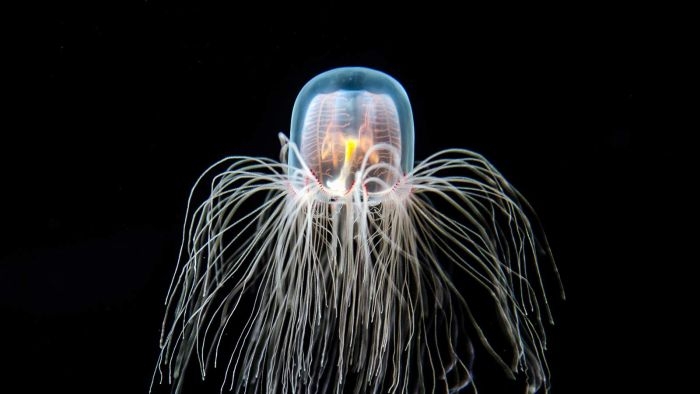 |
| Photo: abc.net.au |
Turritopsis dohrnii, first discovered in the 1880s in the Mediterranean Sea, reported amnh.org.
Fully grown, Turritopsis dohrnii is only about 4.5 mm (0.18 inches) across, smaller than a pinky nail. These tiny, transparent creatures have an extraordinary survival skill, though. In response to physical damage or even starvation, they take a leap back in their development process, transforming back into a polyp. In a process that looks remarkably like immortality, the born-again polyp colony eventually buds and releases medusae that are genetically identical to the injured adult. In fact, since this phenomenon was first observed in the 1990s, the species has come to be called “the immortal jellyfish.”
171. America Accidentally Dropped an Atom Bomb on South Carolina in 1958
In 1958, a B-47 plane was headed to the United Kingdom and was armed with an atomic bomb. This bomb was even bigger than the “Fat Boy,” the atomic bomb dropped on Nagasaki. Pilots noticed a fault light, so one of them decided to check it out.
In doing so, he accidentally released the emergency pin, watching in horror as it dropped to the ground. A critical part of the bomb, needed to set it off, was still on the plane, so the bomb itself never exploded.
172. Baby blue whales grow 200 pounds per day
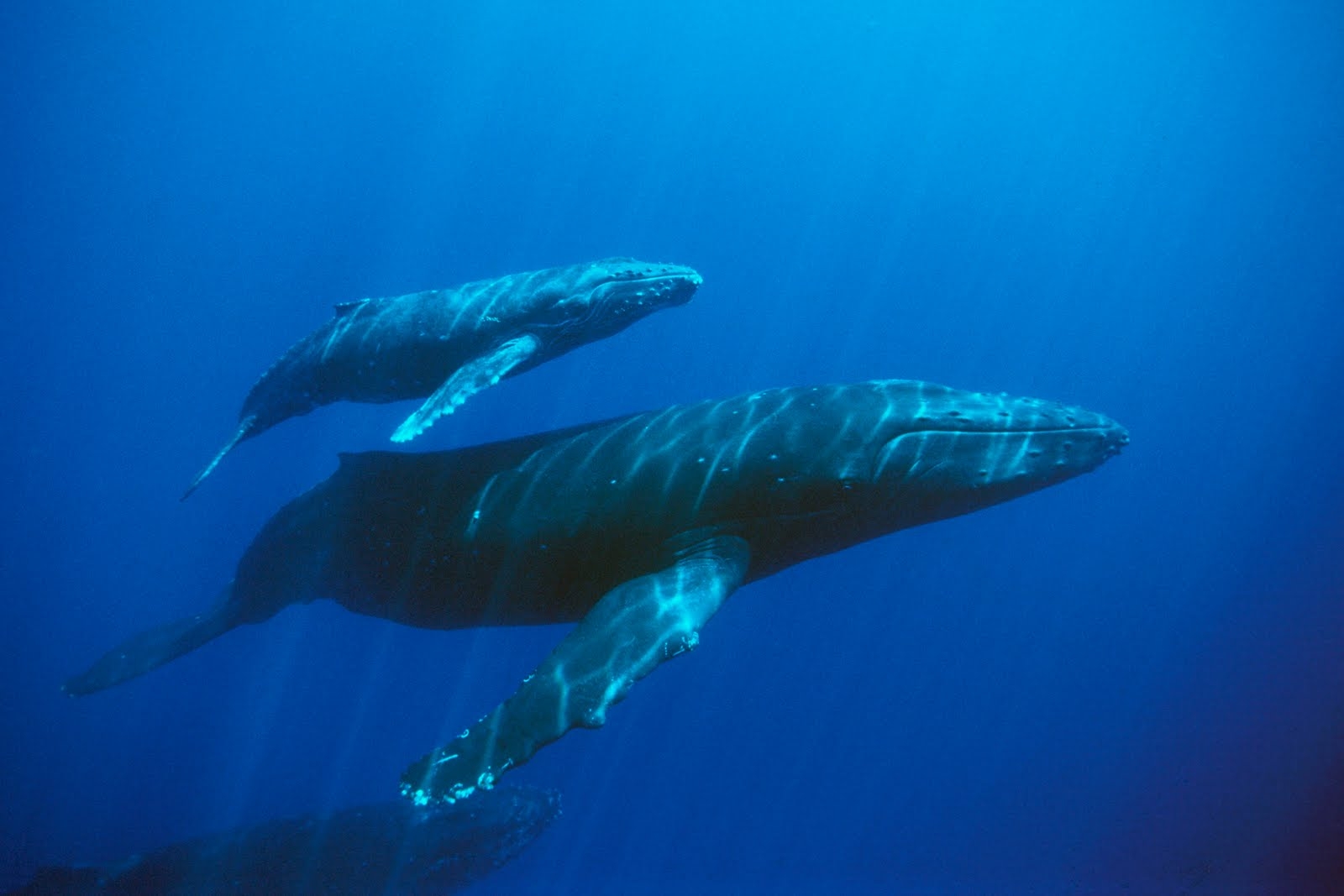 |
| Photo: imgur.com |
According to nationalgeographic, after about a year inside its mother's womb, a baby blue whale emerges weighing up to 3 tons and stretching to 25 feet. It gorges on nothing but mother's milk and gains about 200 pounds every day for its first year.
173. Cats Used to Deliver the News in this Belgian City
With all of this feline indifference and general propensity for lazing around, it makes you wonder what on earth the city of Liège, Belgium, was thinking when they hired 37 cats to deliver the mail in the 1870s. Messages were fastened around the animals’ necks in waterproof bags so the citizens of Liège and surrounding villages could easily communicate with each other. “Unless the criminal class of dogs undertakes to waylay and rob the mail-cats, the messages will be delivered with rapidity and safety," The New York Times reported.
174. Hitler had a flatulence problem
 |
| Photo: grunge.com |
18th July 1943: Hitler is treated for flatulence and constipation. According to the files, The Telegraph reported, flatulence had become such a pervasive issue for Hitler that he had to regularly ingest 28 different drugs to keep it under control. But some of the anti-gas pills he used contained a base of strychnine, a poison that caused further stomach and liver issues.
175. A mermaid "documentary" once fooled so many people that the U.S. government had to issue a statement
In 2013, Animal Planet aired Mermaids: The New Evidence, a documentary—or rather, a mockumentary—that "proved" the half-human-half-fish beings exist. And while the program was fake, plenty of the 3.6 million viewers that watched believed that the fictional claims were real. In fact, so many people were fooled that the U.S. government's National Oceanic and Atmospheric Administration released a statement on its website addressing the confusion, saying: "Mermaids: The New Evidence is just entertainment. No evidence of aquatic humanoids has ever been found."
176. Maine is the only state that borders just one other state
 |
| Photo: mapsofworld.com |
If you're in Maine, you'll find the Atlantic Ocean to the south and Canada to the north. But if you want to stay in the U.S., you'll have to head west to New Hampshire, because Maine is the only state in the country that borders just one other state.
Maine is a state located in New England and situated in the United States. It is the 42nd populous state out of the 50 states of the United States of America. It shares its border with the US State of New Hampshire in the west. To the east is the Atlantic Ocean and the Canadian province of New Brunswick lies to the north and north-east. Quebec, another province in Canada is to the northwest of Maine. The US State is popularly known for its coastline, rolling mountains, seafood cuisine, mainly the lobster and the clams, its continental climate, etc.
177. Tornados used to be called "twirlblasts" and "twirlwinds" in the 18th century
A tornado is as a rotating, funnel-shaped cloud that extends from a thunderstorm to the ground with whirling winds that can reach 300 mph.
Damage paths of tornadoes can be in excess of one mile wide and 50 miles long.
If you lived in the 18th century, you might have referred to tornados using the words "twirlblast" or "twirlwind." Honestly, we might need to bring these back!
178. The Twitter bird's official name Is Larry
 |
| Photo: screenrant.com |
Twitter was launched in 2006. But there still are many people who do not know that its logo — a bird — has a name. It’s Larry T Bird. The inspiration behind the name was Larry Bird, the basketball legend who was in Mumbai recently for the NBA games. Biz Stone, Twitter’s co-founder, is from Boston. And Boston means Boston Celtics and Larry Bird. Stone is on record saying the logo was named after the sporting idol.
179. Jupiter's red spot is getting taller and smaller at the same time
Though once big enough to swallow three Earths with room to spare, Jupiter’s Great Red Spot has been shrinking for a century and a half. Nobody is sure how long the storm will continue to contract or whether it will disappear altogether.
Accoding to NASA, a new study suggests that it hasn’t all been downhill, though. The storm seems to have increased in area at least once along the way, and it’s growing taller as it gets smaller.
For more interesting and fun facts about everthing in the world, new place, new people and new things, please click here!
 100 Fun and Interesting Facts about Everything Would Blow Your Mind! (Part 3) 100 Fun and Interesting Facts about Everything Would Blow Your Mind! (Part 3) There are endless mysteries that have yet to unveiled. From amazing natural phenomena to unpredictable inventions. Stay tuned with KnowInsiders to know more about our ... |
 100 Fun and Interesting Facts about Everything Would Blow Your Mind! (Part 2) 100 Fun and Interesting Facts about Everything Would Blow Your Mind! (Part 2) There are endless mysteries that have yet to unveiled. From amazing natural phenomena to unpredictable inventions. Stay tuned with KnowInsiders to know more about our ... |
 100 Fun and Interesting Facts about Everything Would Blow Your Mind! (Part 1) 100 Fun and Interesting Facts about Everything Would Blow Your Mind! (Part 1) Our large world contains truly a lot of mysteries and interesting things. From amazing natural phenomena to unpredictable inventions. Stay tuned KnowInsiders to know more ... |


























